Certified Jenkins Engineer
Jenkins Pipelines
Demo Create Pipeline using Blue Ocean Graphical Editor
In this guide, you’ll learn how to install the Blue Ocean plugin in Jenkins, create and configure a multibranch pipeline with its graphical editor, archive build artifacts, publish JUnit reports, and view results both in Blue Ocean and the classic UI. Each step includes screenshots to illustrate the workflow.
1. Install the Blue Ocean Plugin
- Navigate to Manage Jenkins → Plugin Manager → Available.
- Search for blueocean, select the plugin bundle, and click Install without restart.
Note
Blue Ocean requires Jenkins 2.x and the Pipeline plugin. Ensure your instance meets these prerequisites before installation.
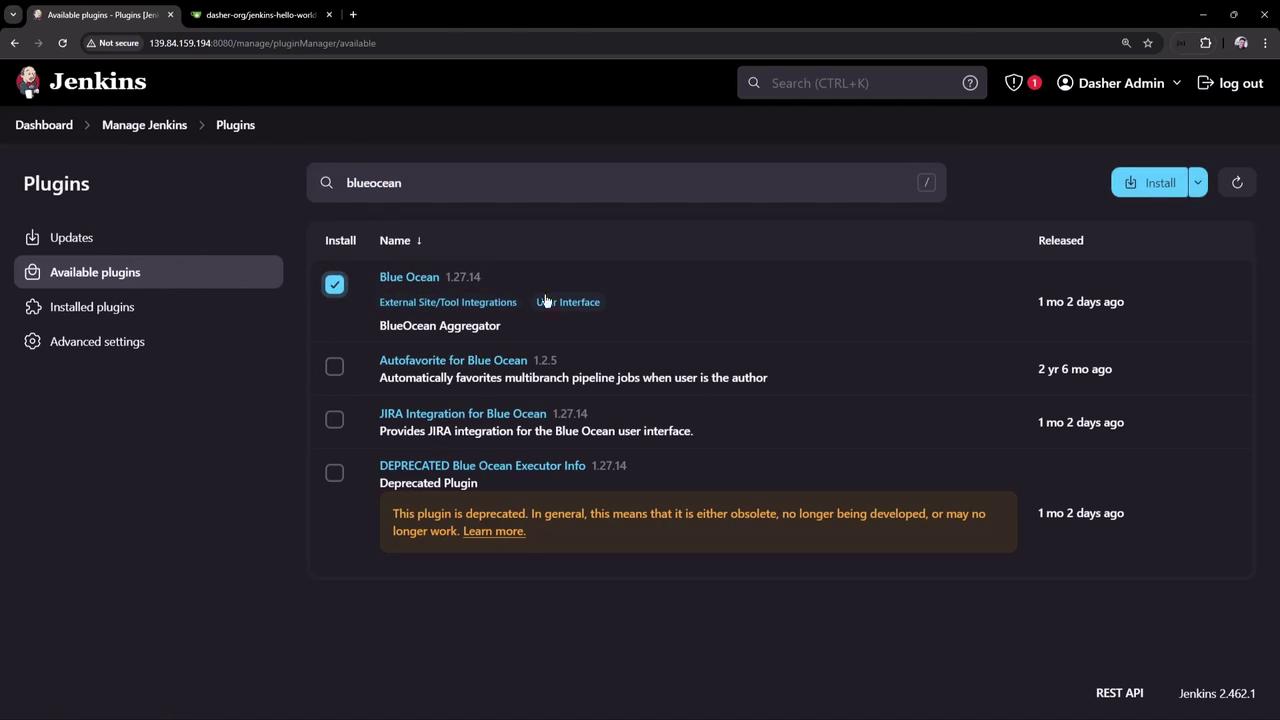
After installation, return to the dashboard. You should see Open Blue Ocean in the sidebar.
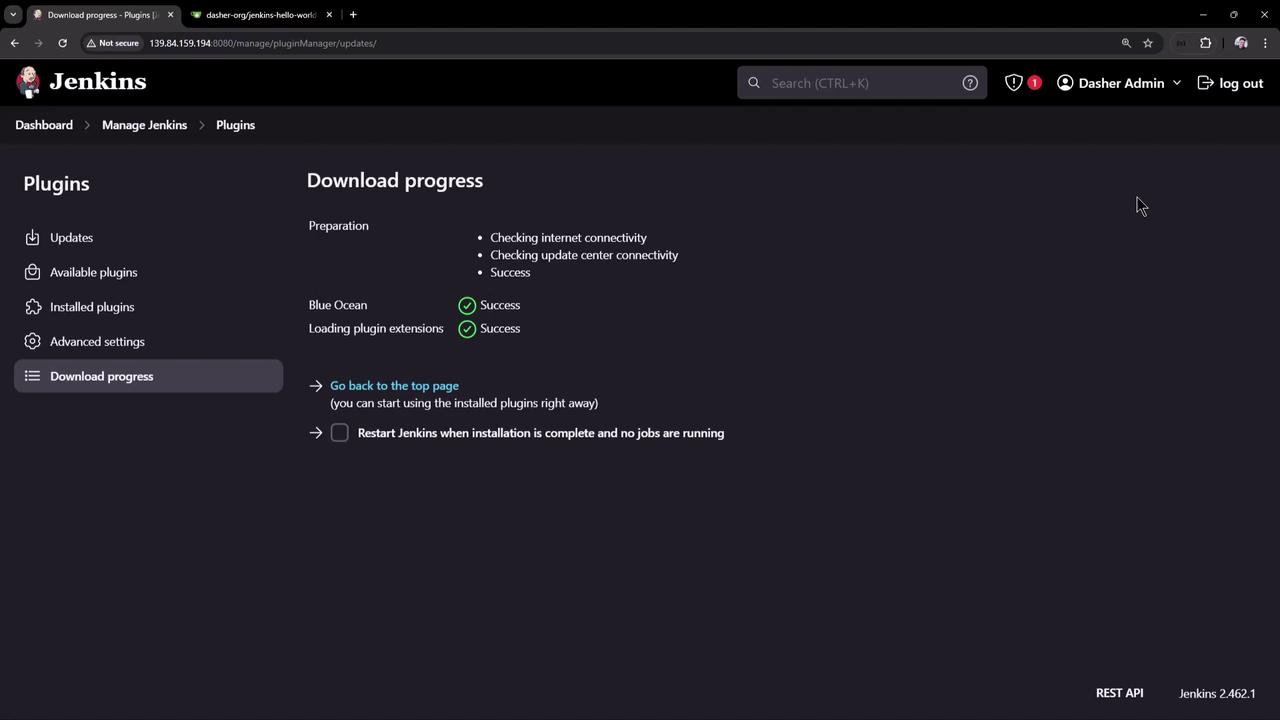
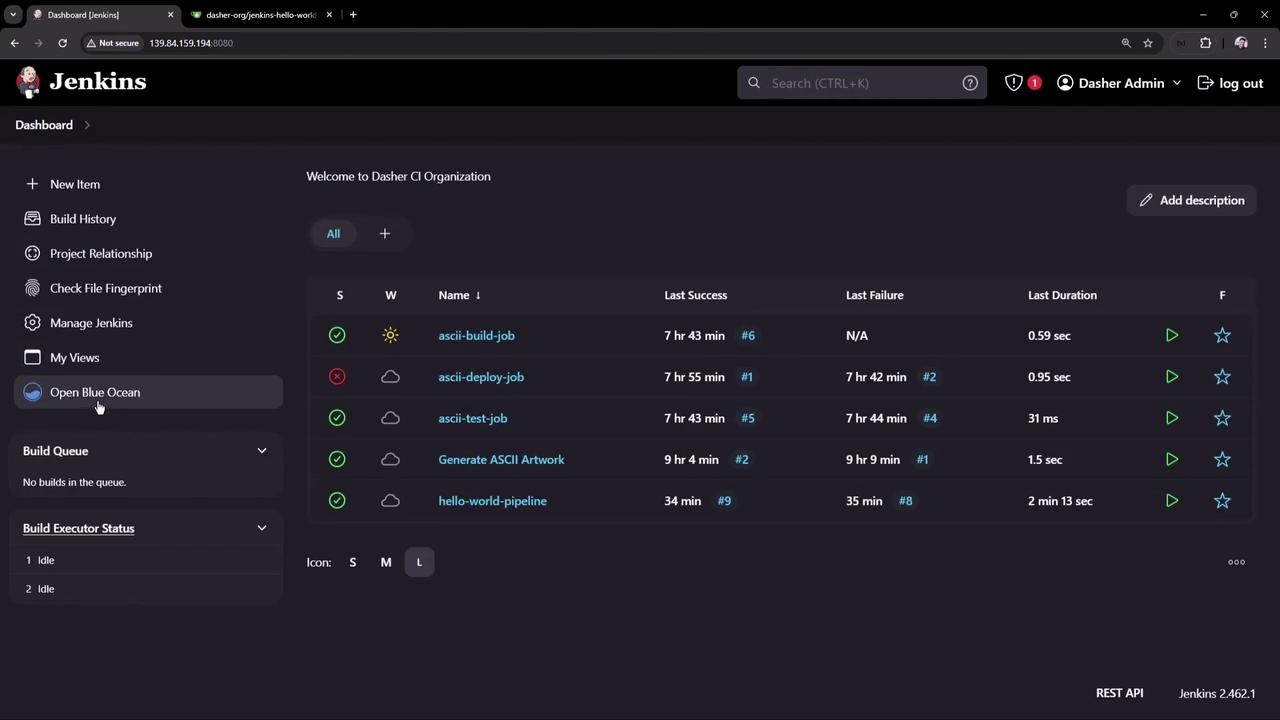
2. Launch Blue Ocean and Create a New Pipeline
- Click Open Blue Ocean → New Pipeline.
- Select Git, enter your repository URL, and add credentials if needed.
- Blue Ocean will scan branches for a
Jenkinsfileand automatically trigger the pipeline if found.
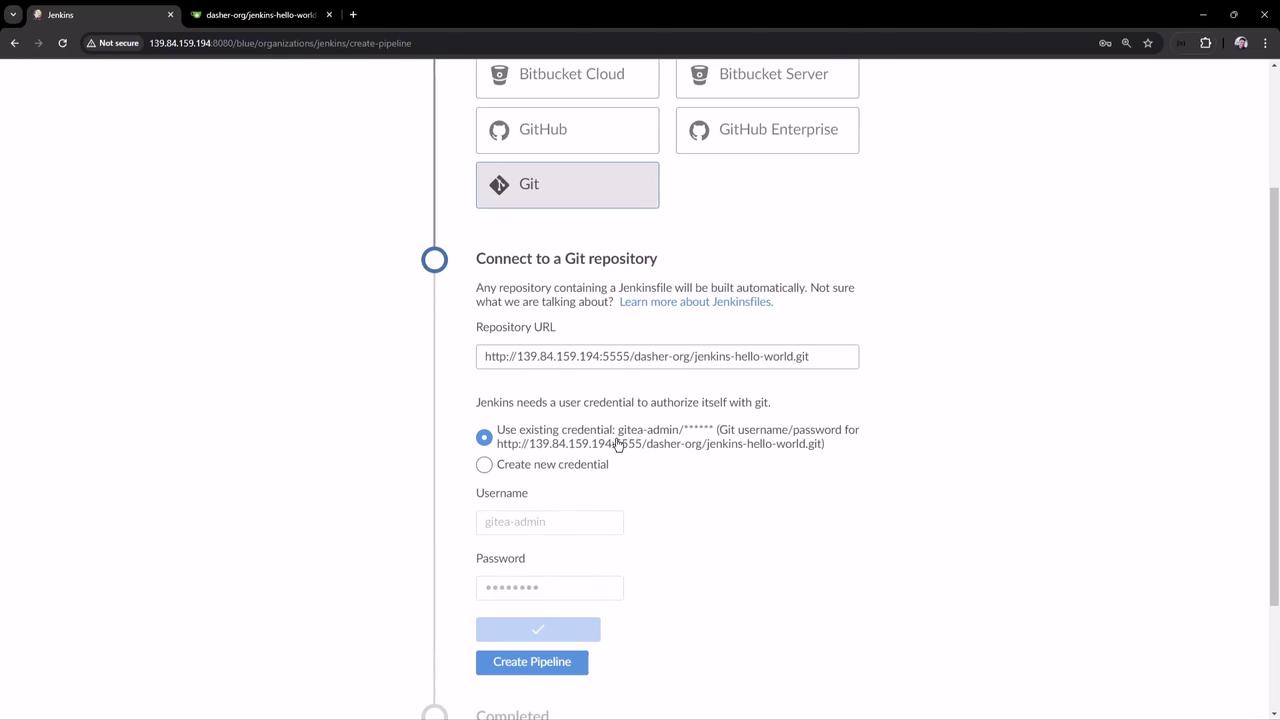
Once branches are indexed and a run starts, you’ll see the activity feed:

3. Example Jenkinsfile and Stage Overview
Below is the sample Jenkinsfile stored in your repository. It defines three key stages:
pipeline {
agent any
tools { maven 'M398' }
stages {
stage('Echo Version') {
steps {
sh 'echo Print Maven Version'
sh 'mvn -version'
}
}
stage('Build') {
steps {
sh 'mvn clean package -DskipTests=true'
}
}
stage('Unit Test') {
steps {
script {
for (int i = 0; i < 60; i++) {
echo "${i + 1}"
sleep 1
}
}
sh 'mvn test'
}
}
}
}
| Stage Name | Purpose | Commands |
|---|---|---|
| Echo Version | Display Maven environment details | mvn -version |
| Build | Compile and package the app | mvn clean package -DskipTests=true |
| Unit Test | Execute unit tests | mvn test (with optional sleep loop) |
After triggering the pipeline, you can monitor each stage in real time:
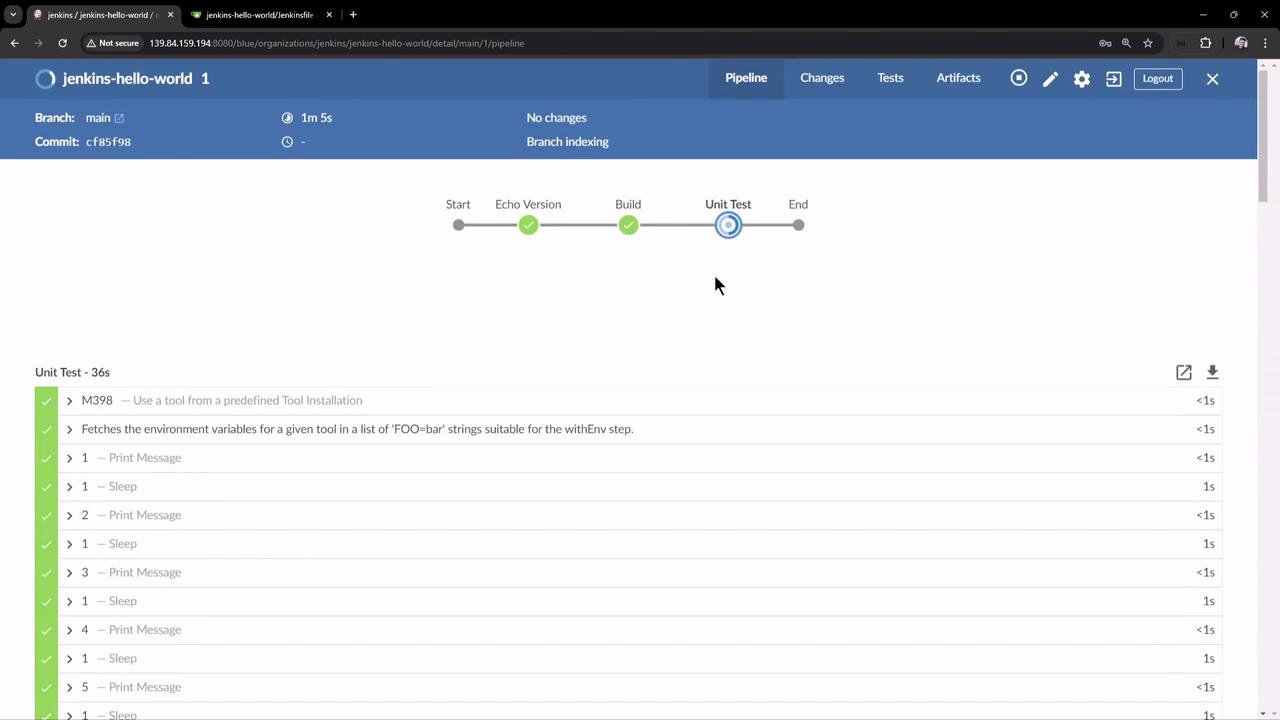
Viewing Console Logs
Echo Version stage output:
mvn -version
Apache Maven 3.9.8 (3645f66c…)
Maven home: /var/lib/jenkins/tools/hudson.tasks.Maven.MavenInstallation/M398
Java version: 17.0.7, vendor: Ubuntu
OS name: "linux", version: "6.8.0-39-generic"
Build stage output:
mvn clean package -DskipTests=true
[INFO] Scanning for projects…
[INFO] Building hello-demo 0.0.1-SNAPSHOT
[INFO] --- maven-clean-plugin:3.3.2:clean (default-clean) @ hello-demo ---
…
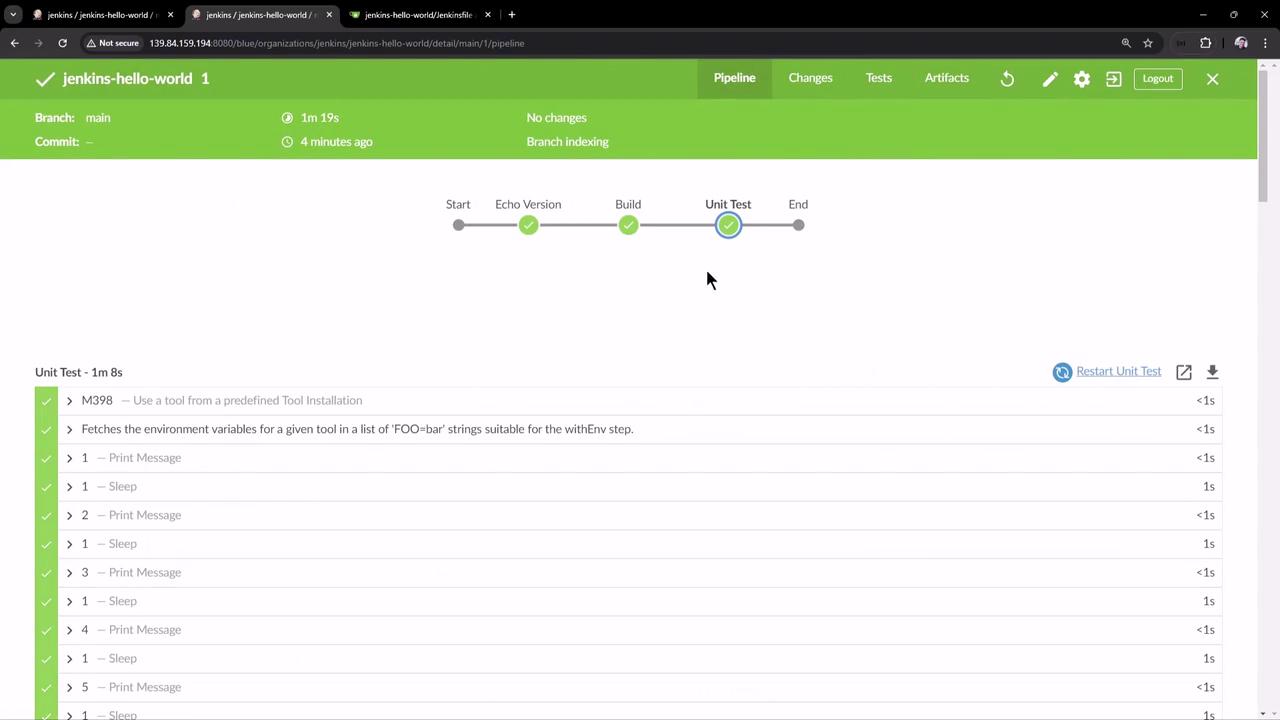
4. Inspect the Multibranch Pipeline Configuration
Blue Ocean automatically creates a Multibranch Pipeline job in the classic UI:

When Jenkins scans your repository, it runs:
> git ls-remote -h -- http://…/jenkins-hello-world.git
Checking branch main
'Jenkinsfile' found
Met criteria
Scheduled build for branch: main
Processed 1 branches
Finished: SUCCESS
5. Edit the Pipeline in Blue Ocean
Back in Blue Ocean:
- Select your branch and click the pencil icon to open the visual editor.
- Remove the sleep loop in Unit Test to simplify:
stage('Unit Test') {
steps {
sh 'mvn test'
}
}
Press Ctrl+S (or Command+S on Mac) to save and commit the changes to your Jenkinsfile.
6. Archive Build Artifacts
- In the Build stage, click + Add Step → Archive Artifacts.
- Enter the file pattern:
target/hello-demo-*.jar.
Verify on the Jenkins controller:
cd /var/lib/jenkins/workspace/jenkins-hello-world_main/target
ls
hello-demo-0.0.1-SNAPSHOT.jar
Your updated Build stage:
stage('Build') {
steps {
sh 'mvn clean package -DskipTests=true'
archiveArtifacts 'target/hello-demo-*.jar'
}
}
7. Publish JUnit Test Results
The JUnit plugin is pre-installed, as shown here:

To add JUnit reporting:
- Edit the Unit Test stage → + Add Step → Archive JUnit-formatted test results.
- Enter
target/surefire-reports/TEST-*.xmland select Keep properties and Keep test names.
Final Unit Test stage snippet:
stage('Unit Test') {
steps {
sh 'mvn test'
junit testResults: 'target/surefire-reports/TEST-*.xml', keepProperties: true, keepTestNames: true
}
}
8. Commit and Validate Changes
Click Save, add a commit message (e.g., “Archive artifacts and publish JUnit reports”), and push to the main branch:
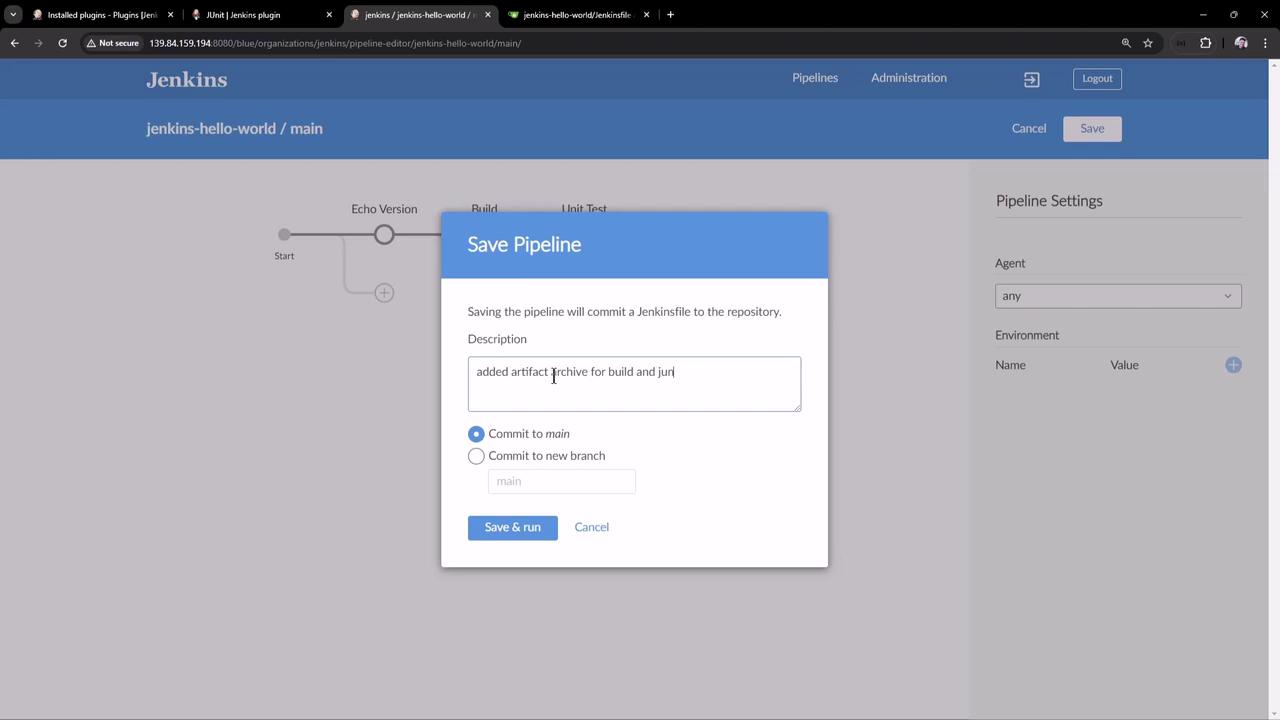
Warning
If you mistype the artifact pattern (for example, hello-world-*.jar), the build will fail:
> archiveArtifacts 'target/hello-world-*.jar'
No artifacts found that match the file pattern 'target/hello-world-*.jar'
Double-check your paths before committing.
9. View Pipeline Results
Once the pipeline completes successfully, Blue Ocean displays:
- Build stage with archived artifacts
- Unit Test stage with pass/fail details
- A summary showing all tests passed
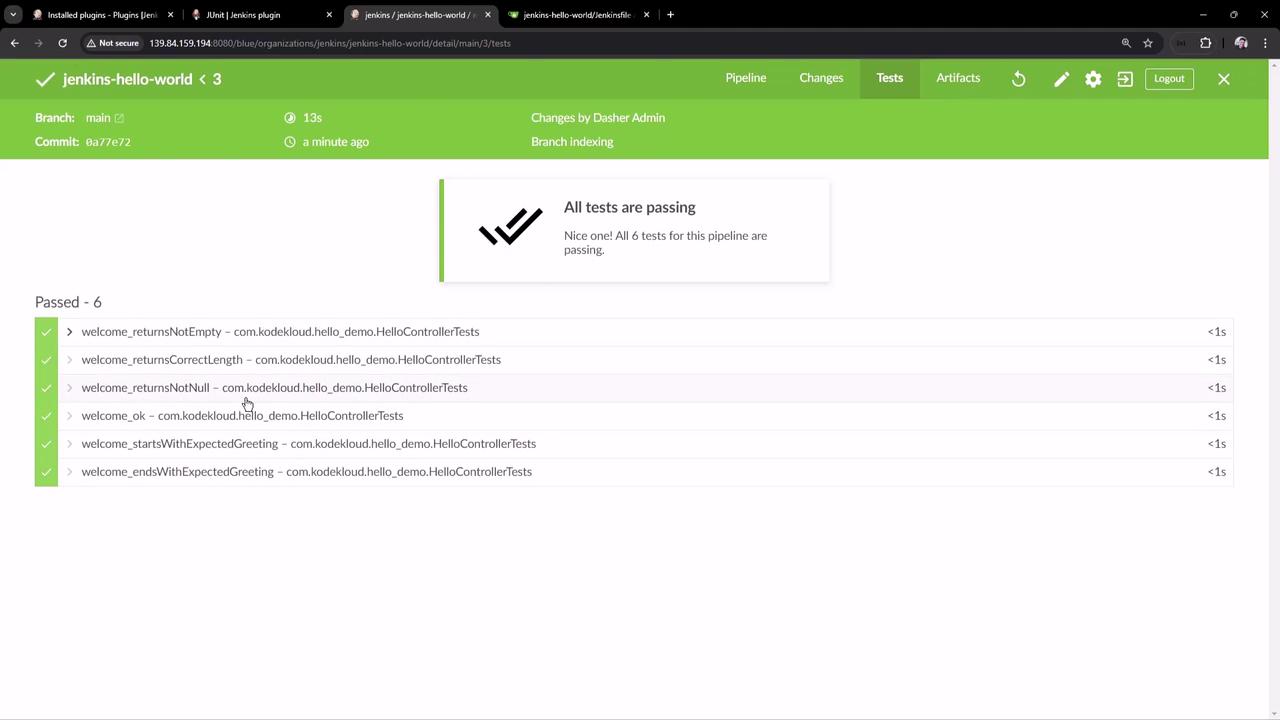
In the classic UI, you can also review build history, visualize test trends, and download artifacts:
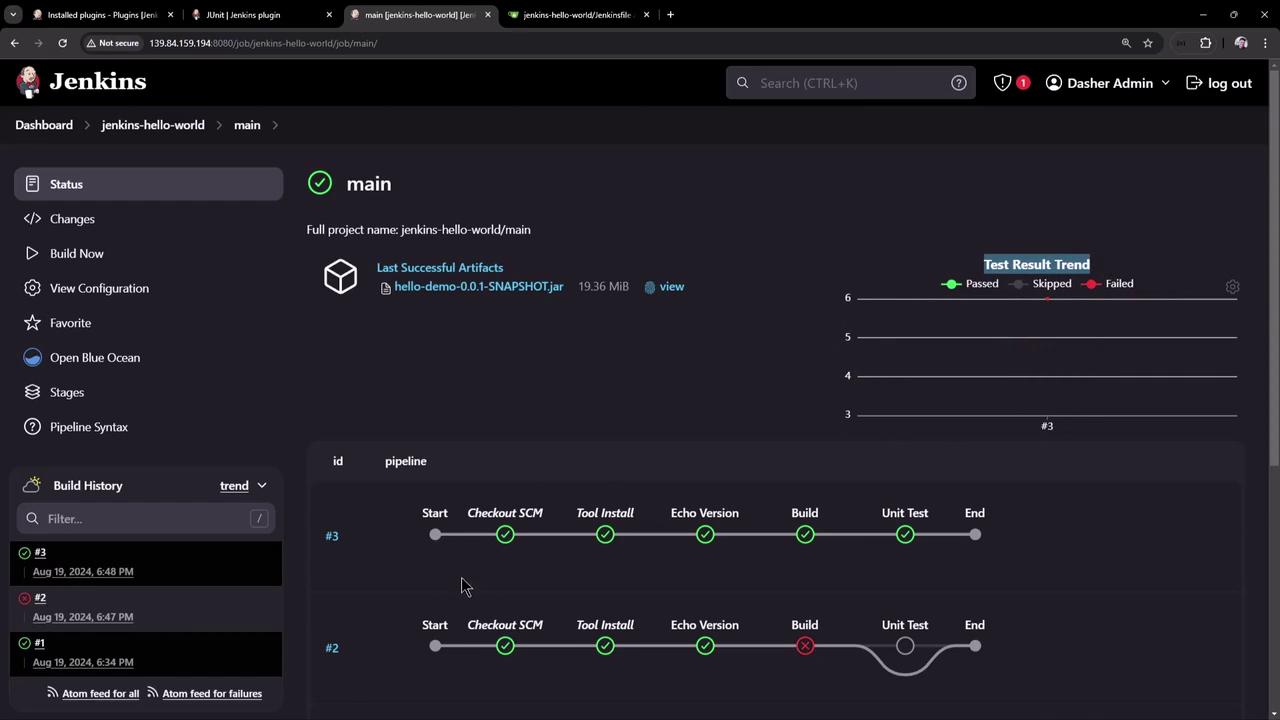
Additional Resources
Watch Video
Watch video content